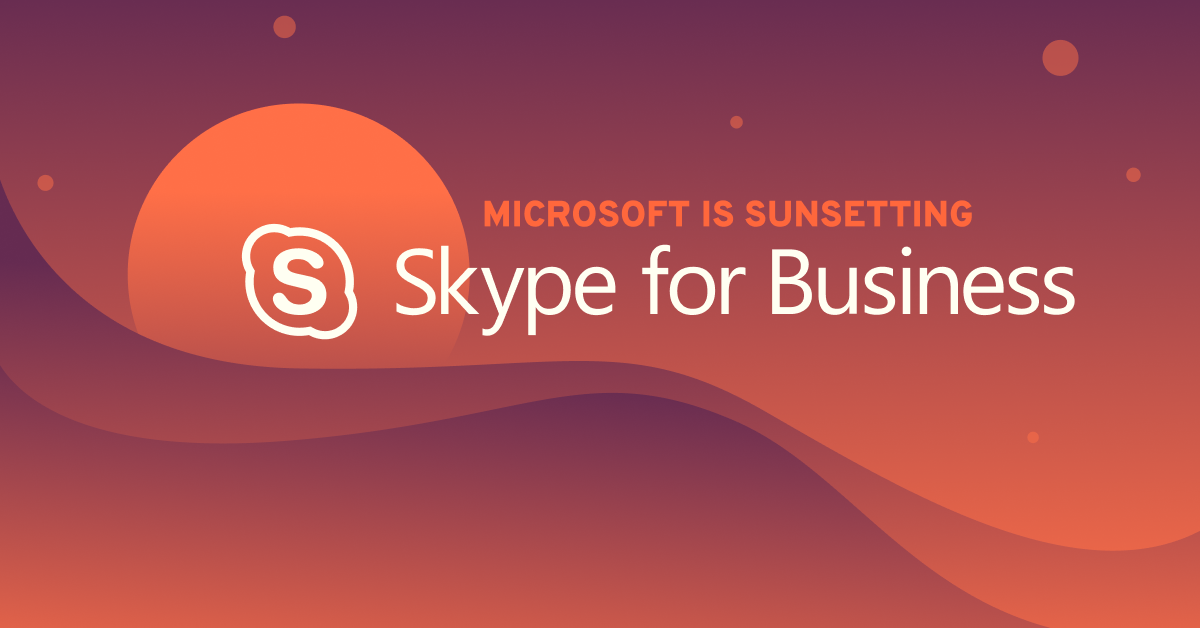Updated: September 12, 2023
In case you missed the news back in July of 2019, Microsoft announced their plans to sunset Skype for Business Online. If this is news to you (and even if it’s not), there are probably lots of questions running through your head—why did this happen; when did this happen; what does this mean for my organization?
Don’t worry—Microsoft has options for you, and we’ll answer all your questions.
Why did Microsoft sunset Skype for Business?
The main reason for Microsoft retiring Skype for Business Online was their desire to consolidate products and the associated support resources to maintain focus on one single UCaaS (Unified Communications as a Service) platform. Instead of maintaining Skype for Business and Teams, Microsoft placed focus on the Teams product, which offers many of the same functionalities of Skype for Business, as well as others (more on that below).
When was Skype for Business retired?
Following the launch of Teams in 2017, Microsoft announced that Skype for Business Online would no longer be accessible after July 31, 2021.
What’s the difference between Teams and Skype for Business?
So if you’re looking to migrate from Skype for Business to Teams you’re probably wondering “what’s the difference?” One of the major differences between the two platforms is in how they’re delivered. Microsoft Teams is a pure-play UCaaS system (Unified Communications as a Service), meaning there is no option for an on-premise deployment.
Skype on the other hand has both an on-premise and a cloud option. The on-prem option, known as Skype for Business Server, has actually not been sunsetted or given end-of-life and will be able to be maintained. Skype for Business Online, however, the one we’re talking about throughout this article, has been retired and rolled up into Teams.
Now that we’ve got that straight let’s look at the difference between Skype for Business Online and Teams.
Microsoft Teams
With Teams, you get a tool that offers a unified source for communication, collaboration, and productivity.
Put simply, it combines the voice and video communication capabilities of Skype for Business, the productivity of Office 365, and the collaboration of a tool like Slack.
Skype for Business
With Skype for Business you got features such as Instant Messaging, Audio Calling, and Video Calling. There are advanced features when integrating with other Microsoft software, including file sharing and the ability to use SIP for communications.
Skype for Business offers a solid communications platform, but lacks many of the features that Teams offers, enabling users and groups to work more effectively and efficiently.
| Microsoft Teams | Skype for Business | |
|---|---|---|
| Instant messaging | Yes | Yes |
| Voice calling | Yes | Yes |
| Video calling | Yes | Yes |
| Office 365 integrations | Yes | No |
| Chat channels | Yes | No |
What does my business need to do?
All you needed to do was decide which platform to migrate to. Microsoft has made it fairly easy to migrate to Teams (they have helper software and everything), but based on your needs you may want to move to a different platform.
Once you’ve decided which platform you’re migrating to, put a plan in place with a timeline and what steps you need to take to complete that migration. This will get your organization thinking about the steps you need to take in order to prevent downtime during the migration. That plan should include change management considerations as well as what features and functionality you need to move over, or move to, in your new platform.
Make sure you’re futureproofing your organization’s tech stack
Don’t forget to have an internal discussion about the future of your unified communications solution, and while you’re having that conversation you can discuss potential ways to increase the ROI of your platform.
We see many organizations realize higher ROI on their unified communications platforms by using it increasingly as their VoIP phone or softphone solution. Are you doing that today? If not, you should consider it in the context of your migration which serves as an opportune time to implement a test group. Learn more about migrating your telephony to the cloud in our most helpful ebook.
Don’t ignore 911
If you’re moving to Teams, Microsoft has taken some extra steps to provide modern emergency features such as Dynamic 911, which leverages the caller’s real-time location for both call routing and display to the public safety answering point. Teams also includes emergency notifications to alert your security teams, front desk attendant, or other designated personnel that a 911 call has been made by one of your users. Both of these features are critical components of emerging federal 911 regulations such as Kari’s Law and RAY BAUM’s Act.
Migrate like magic to Microsoft Teams
Check out how companies like Doosan have migrated to Microsoft Teams Direct Routing with flexibility and ease.



